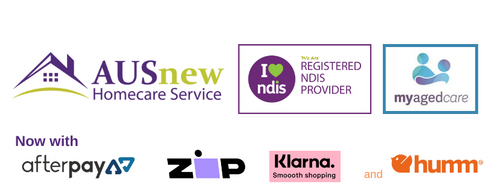When Staicee Lehmann first got her assistance dog Felicity, she was looking forward to finally gaining independence.
But four years later, she still worries about going down the road to the local shops.
"Every single time we go out of the house, I have people that come up and put a … phone in her face wanting photos — but they don't ask," the 30-year-old says.
"I have people that pick her up; everyone always has their hands on her."
Despite clear labelling on Felicity's harness that she is an assistance dog and not to be touched, it doesn't deter people from wanting to pat her, Staicee says.
WARNING: This story talks about self-harm
'Her job is keeping me safe'
It's more than just unwanted attention; the distractions can impact Felicity's ability to provide assistance.
"It also undoes the training she has been doing since she was five weeks old," Staicee says.
"Her job is keeping me safe. When she's working, that's where her attention needs to be.
"Some people that have assistance dogs have heart conditions and epilepsy, so distracting an assistance dog is really dangerous for the handler."
Staicee says she thinks people don't believe she has a disability — and they don't respect her boundaries.
"I have 19 different anxiety-based disorders and agoraphobia … PTSD, depression [and] obsessive compulsive disorder," she says.
"I get [asked] frequently, 'Why do I need assistance?' Or [told], 'You don't look disabled.'
"Disabilities aren't always physical."
'She has little signals she gives me'
For Staicee, the assistance Felicity provides is vital.
"I have flashbacks and she'll alert me to where I am," she says.
"She has little signals she gives me, and I pat her, and by timing my breathing with her, it's like a grounding exercise," she says.
Staicee says Felicity also helps when she dissociates and self-harms by picking at her skin.
"Felicity jumps up and pulls at my wrist and will climb up and cover my neck to calm me down," she says.
In a recent encounter, Staicee remembers feeling cornered in the aisle of a discount department store.
"I got swarmed. There were over 15 people around me and a couple kept patting her," she says.
"My instant reaction in those situations is [to] start shaking. And she starts to shake, because she picks up on that."
A common problem for assistance dog handlers
Assistance Dogs Australia CEO Dr Matthew Miles says unwanted attention is a frequent frustration for assistance dog handlers.
"As assistance dogs become more commonplace in community settings, it is heartening to see how many people are aware of the fact that assistance dogs need space to focus when working," he says.
"But there are certainly still people who either do not know this — or who do know but feel entitled to the dog's attention and affection anyway. It always need reiterating.
"[For assistance dog handlers] with PTSD, sudden, unexpected or unwanted attention from strangers can be enormously difficult to deal with.
"People need to bear in mind when they see an assistance dog in public that they have no idea what battles that dog's handler is fighting."
Dr Miles says people should also be aware that assistance dogs serve many purposes and needs.
"[There's a] misconception that all assistance dogs are guide dogs working with blind or visually impaired people," he says.
"Assistance dogs fulfil myriad roles. At ADA alone, we provide dogs to clients with physical disabilities, PTSD and autism, as well as facilities such as schools and courthouses.
"All guide dogs are assistance dogs, but not all assistance dogs are guide dogs."
For Staicee, the message is simple. If you see her with Felicity, just let her get on with her day.
"Just give us space, that's all I ask," she says.
"You can smile and move on."
